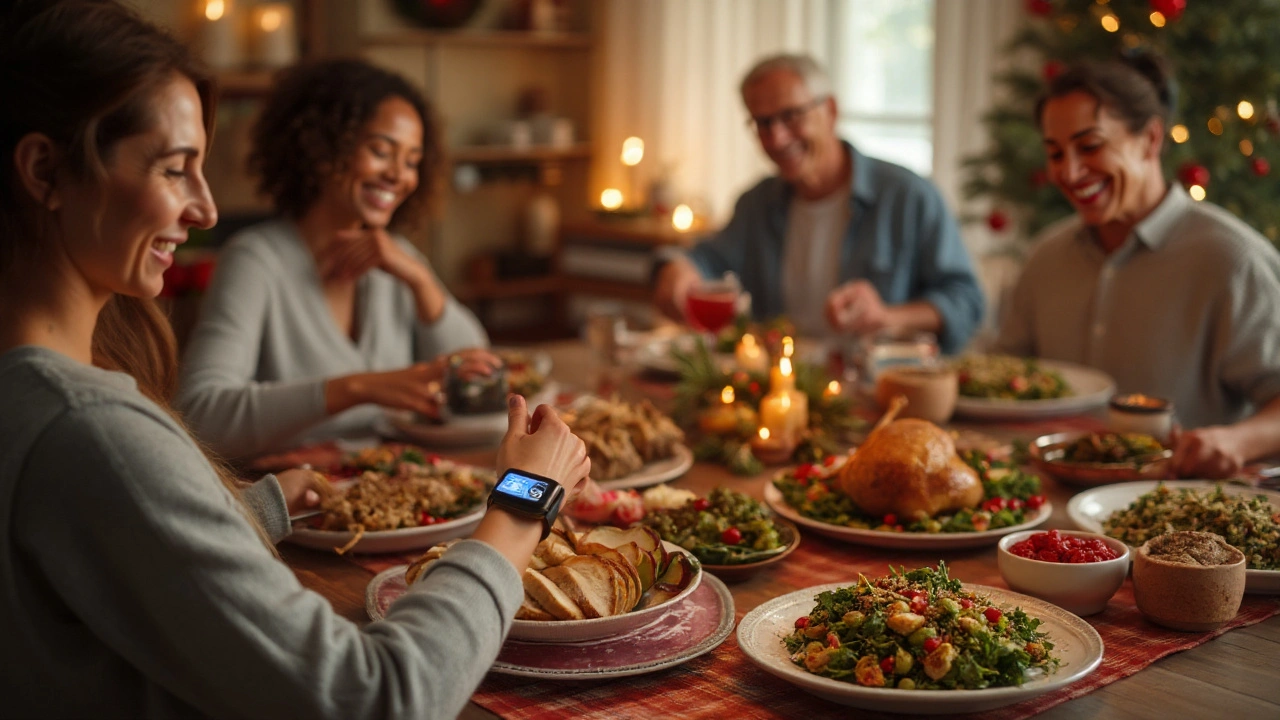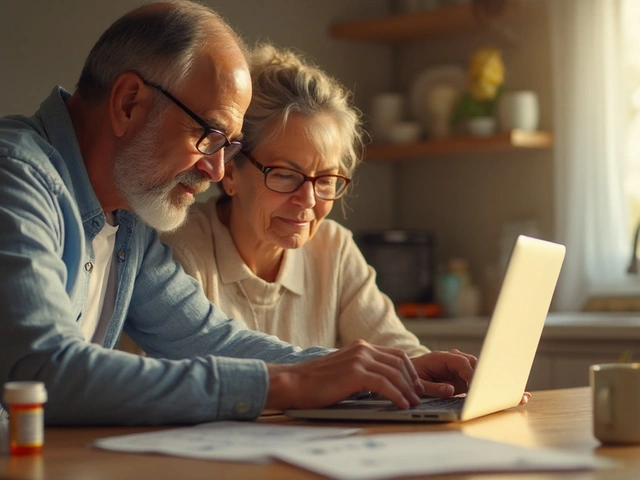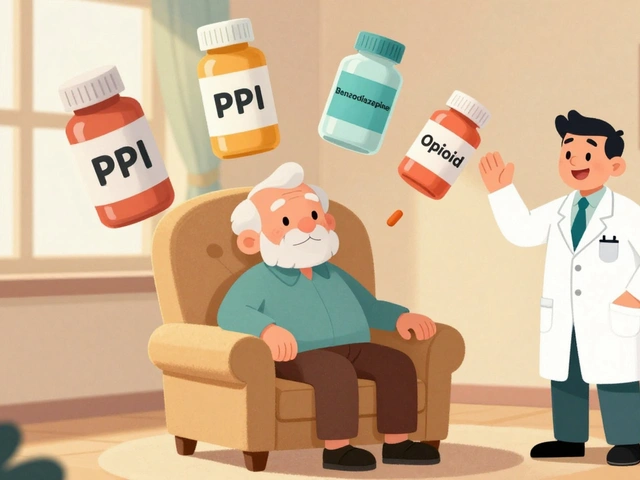Type 2 Diabetes is a chronic metabolic condition characterized by insulin resistance and elevated blood glucose levels. It affects roughly 10% of adults worldwide and is managed through medication, diet, and lifestyle adjustments. During the holiday season, the usual routine is often disrupted, making type 2 diabetes holidays a common concern for patients and caregivers.
Why the Holidays Are a Challenge
Festive gatherings bring high‑carb desserts, irregular meal times, and added stress-all of which can push glucose readings upward. A 2023 study from the Canadian Diabetes Association reported a 15% spike in emergency department visits for hyperglycemia between December and January. Understanding the underlying triggers helps you plan ahead.
Core Strategies for Blood Glucose Management
Three pillars keep your numbers steady: monitoring, nutrition, and activity.
1. Blood Glucose Monitoring
Effective monitoring starts with the right tool. The most common options are:
| Method | Typical Cost (CAD) | Reading Frequency | Accuracy (MARD) |
|---|---|---|---|
| Fingerstick Glucometer | $30‑$70 | Multiple times daily | ≈9% |
| Continuous Glucose Monitor (CGM) | $200‑$300 (sensor) | Every 5‑15 min | ≈8% |
| Smartphone‑linked Meter | $50‑$100 | On demand | ≈10% |
For holiday travel, a CGM offers real‑time alerts without the need for finger pricks. If you’re already using Metformin a first‑line oral medication, pair it with a portable meter to verify that meals aren’t causing unexpected spikes.
2. Carbohydrate Counting and Glycemic Index
Carbohydrate Counting is a method that tracks the grams of carbs consumed at each meal. It works hand‑in‑hand with the Glycemic Index (GI), which ranks foods by how quickly they raise blood sugar. A practical rule: choose low‑GI options (GI<55) for the main course and reserve high‑GI treats for a small, measured portion.
Example: Swap a sugary cranberry sauce (GI≈85) for a fresh‑fruit compote sweetened with a splash of orange juice (GI≈45). You still enjoy the festive flavor but keep the glucose rise modest.
3. Physical Activity and Stress Management
Even a brief 15‑minute walk after a big dinner can improve insulin sensitivity by up to 20%. If weather limits outdoor strolling, try a quick indoor circuit: 5 minutes of marching in place, 5 minutes of squat‑to‑chair stands, and 5 minutes of gentle stretching.
Stress releases cortisol, which nudges blood sugar upward. Incorporate mindful breathing or a 10‑minute guided meditation during holiday chaos. A 2022 University of British Columbia trial showed a 0.6% reduction in HbA1c after daily 5‑minute breathing exercises for six weeks.
Smart Food Choices for Holiday Meals
Below is a quick‑reference guide for common holiday dishes, their carb content, and a healthier swap.
- Roasted Turkey (no skin) - 0g carbs - Keep as is; protein helps steady glucose.
- Mashed Potatoes (1 cup) - 30g carbs - Replace half with cauliflower mash (5g carbs).
- Green Bean Casserole (½ cup) - 12g carbs - Use fresh green beans and a light mushroom sauce.
- Pumpkin Pie (1 slice) - 45g carbs - Serve a mini‑portion topped with whipped ricotta (low‑fat).
- Eggnog (1 cup) - 30g carbs - Opt for a low‑sugar almond‑milk version (≈12g carbs).
Portion control stays key. A handy visual: a fist equals roughly one cup of carbs; a palm‑sized serving of protein; a thumb of healthy fat.
Alcohol: Enjoy Responsibly
Alcohol can cause both highs and lows. A standard drink (5oz wine, 12oz beer, 1.5oz spirits) typically adds 10‑15g of carbs and can blunt hypoglycemia warnings. If you choose to drink:
- Eat a balanced snack (protein + fiber) before the first drink.
- Stick to no more than two drinks per occasion.
- Monitor glucose 30 minutes before and two hours after drinking.
Low‑carb options include dry wine, spirits mixed with soda water, or a sugar‑free mocktail.

Travel Tips for Holiday Visits
Visiting family often means staying in hotels or friends’ homes. Prep ahead:
- Pack a travel‑size glucometer, extra test strips, and a spare sensor if you use a CGM.
- Bring a list of your medications, doses, and timing - share it with your host.
- Identify nearest pharmacies or urgent‑care centers in case of an emergency.
- Adjust insulin or oral meds if you expect a change in routine or activity level; discuss any changes with your healthcare provider beforehand.
When to Seek Professional Help
If you notice any of the following, contact your healthcare provider promptly:
- Fasting glucose > 130mg/dL for three consecutive days.
- Repeated lows (<70mg/dL) despite eating.
- Persistent fatigue, blurred vision, or unexplained weight loss.
- Any signs of infection - holiday crowds can increase risk.
Early intervention can prevent hospital visits and keep the festivities enjoyable.
Putting It All Together: A Sample Holiday Day Plan
Here’s a realistic schedule you can adapt:
- Morning (8am): Check glucose, take Metformin, have a high‑protein breakfast (Greek yogurt + berries).
- Mid‑morning (10am): Quick walk around the block (15min).
- Lunch (12pm): Grilled chicken salad with olive oil dressing; record carbs (≈15g).
- Afternoon (3pm): Light snack - a handful of almonds + a small apple; check glucose.
- Evening (6pm): Holiday dinner - turkey, cauliflower mash, green beans; sip a glass of dry wine; monitor glucose 30min after eating.
- Post‑dinner (9pm): 10‑minute meditation, a short stroll, final glucose check before bed.
This routine blends monitoring, activity, and smart nutrition without feeling like a strict diet.
Related Concepts Worth Exploring
Understanding the broader context can deepen your management toolkit. Topics that naturally follow include:
- Healthy Sleep Hygiene - how 7‑8 hours of restorative sleep improves insulin sensitivity.
- Stress‑Reduction Techniques - meditation, yoga, and breathing exercises.
- Mindful Eating - slowing down meals to recognize fullness cues.
- Telehealth Consultations - quick virtual check‑ins with your endocrinologist during the busy season.
Each of these areas connects back to the core pillars of glucose control and can be tackled after the holidays.

Frequently Asked Questions
Can I enjoy holiday desserts without spiking my blood sugar?
Yes. Choose low‑GI desserts, limit portion size (a bite‑size piece), and pair them with protein or healthy fat. For example, a small square of dark chocolate (70% cocoa) paired with a handful of nuts can satisfy cravings while keeping glucose stable.
Should I adjust my Metformin dose during the holidays?
Only under medical guidance. If you anticipate major dietary changes or increased activity, discuss a temporary dose tweak with your healthcare provider. Never change medication on your own.
Is a CGM worth the investment for occasional holiday use?
For many, the real‑time data and alerts outweigh the cost, especially if you travel or have unpredictable meals. Some provinces offer insurance coverage for CGMs; check your health plan.
What’s the safest amount of alcohol for someone with Type 2 Diabetes?
Limit intake to one standard drink for women and up to two for men per occasion, always with food. Monitor glucose before, during, and after drinking to catch any unexpected changes.
How can I stay active when the weather is cold?
Indoor options work well: follow a short YouTube cardio video, do body‑weight circuits, or use a stationary bike. Even five minutes of movement after each meal can help control glucose.






Charlie Crabtree
September 24, 2025 AT 19:56Whoa, holiday season can be a beast for anyone with type 2 diabetes, but you've got this! 🎉 Keep your CGM on, stay active, and remember to sip water between those festive treats. You’ll be fine! 😎💪
Sharif Ahmed
September 27, 2025 AT 20:43One cannot simply dismiss the intricate ballet of glycemic control amidst Yuletide extravagance. The confluence of high‑glycemic confectionery and irregular nocturnal reveries demands a scholar’s vigilance, lest one's metrics descend into chaos.
Fatima Sami
September 30, 2025 AT 21:30While the advice is sound, I must note that "high‑carb desserts" should be hyphenated as "high‑carb desserts" for consistency. Also, "monitoring" is spelled correctly here, but watch the plural form later.
Tom Smith
October 3, 2025 AT 22:16Oh sure, just slap a CGM on and everything’s peachy – because nothing says "I’m responsible" like relying on a pricey gadget while ignoring the basics, right?
Shane Hall
October 6, 2025 AT 23:03Listen up, friends: the cornerstone of holiday diabetes success is preparation.
Pack a portable meter, pre‑plan your meals, and schedule extra walks after big meals.
Don’t wait for a spike to panic – act proactively!
When you see a trend upward, adjust your insulin or medication promptly.
Hydration is your secret weapon – water helps flush excess glucose.
And remember, stress fuels cortisol, which spikes sugar, so breathe deeply and stay calm.
Finally, celebrate the moments that truly matter, not just the dessert.
Ira Andani Agustianingrum
October 9, 2025 AT 23:50Hey, I get that holidays are crazy, but you can totally keep your numbers steady. Try swapping out sugary pies for a fruit‑based option – same festive vibe, less glucose jump. Also, set a reminder on your phone to check your levels before and after meals. It’s a small habit that can make a big difference.
James Higdon
October 13, 2025 AT 00:36It is a moral imperative to approach the holiday season with disciplined self‑control. Lack of restraint not only endangers personal health but also sets a poor example for the community. One must therefore uphold the highest standards of dietary vigilance.
Kyah Chan
October 16, 2025 AT 01:23The presented guide suffers from a lamentable paucity of empirical substantiation. Assertions regarding "15% spike" lack citation, and the recommendation to "choose low‑GI options" is overly simplistic, neglecting individual variability in glycemic response. A more rigorous analysis is warranted.
Jaime Torres
October 19, 2025 AT 02:10Too much sugar.
Christopher Montenegro
October 22, 2025 AT 02:56From a clinical pharmacoeconomic perspective, the integration of continuous glucose monitoring (CGM) within peri‑holiday metabolic management protocols constitutes a pivotal vector for attenuating hyperglycemic excursions, thereby optimizing both patient‑centred outcomes and systemic cost‑efficiency metrics.
RaeLyn Boothe
October 25, 2025 AT 03:43Honestly, it feels like you’re glossing over the personal stress that families face during gatherings. I know you’ve got your own routines, but many people are juggling work, kids, and the pressure to host. That’s a lot to manage while monitoring sugar.
Wayne Adler
October 28, 2025 AT 04:30I totally feel you on the stress part – it’s a real nightmare when the blood sugar spikes and you’re scrambling. Just remember to breathe deep, maybe do a quick 5‑minute walk after a big meal. It’s not just about the numbers, it’s about feeling in control.
Nathan Hamer
October 31, 2025 AT 05:16Oh, the drama of holiday carbs! Let us not forget the perilous allure of that crumbly gingerbread-each bite a siren song to our pancreatic beta‑cells! 🥀 Yet, fear not, dear reader, for with vigilant CGM alerts and a pinch of willpower, you shall triumph! 😉
Remember, consistency is king-check your levels before you indulge and again an hour later. The data will guide you, not the panic.
Marvin Powers
November 3, 2025 AT 06:03Ah, the holiday feast-a cultural tapestry woven with butter‑laden pastries and sugary delights that could make even the most disciplined glucose monitor weep. One must, of course, approach this gastronomic gauntlet with the wisdom of a seasoned anthropologist, noting the sociocultural significance of each morsel while simultaneously plotting a strategic defense against hyperglycemic tyranny.
First, procure a portable CGM; it’s practically a passport to peace of mind. Second, embrace the ancient practice of mindful eating-chew slowly, savor the spice, and watch those blood sugar spikes with a skeptical eye.
And let’s not forget the importance of movement; a peripatetic stroll around the living room while Aunt Marge narrates yet another family saga is a proven method to mitigate glucose surges.
Finally, remember: no one can truly enjoy the holidays unless they master the delicate art of balancing joy and health-so raise a glass of sparkling water to that!
Arjun Santhosh
November 6, 2025 AT 06:50yeah, thats some good tipz. i think its also ok to have a lil extra cake once in a while. just dont overdo it lol
thanks for the advice.
Kyle Olsen
November 9, 2025 AT 07:36While your enthusiasm is noted, the notion that a mere walk will offset the caloric excess of a holiday turkey is a gross oversimplification. One must consider basal metabolic rate, macronutrient composition, and the thermic effect of food before proclaiming such panacea. Furthermore, your suggestion lacks empirical substantiation.
Stephanie Jones
November 12, 2025 AT 08:23In the quiet moments between holiday merriment, one may contemplate the fleeting nature of glucose control-a metaphor for the impermanence of all joys. Yet, this very ephemerality gives weight to our efforts, for fleeting highs and lows echo the deeper valleys of existence.
Sarah Kherbouche
November 15, 2025 AT 09:10Our nation must stand strong against the onslaught of foreign sweets that threaten our health! We should ban those sugary imports and protect our people from this invasive glucose danger. #AmericaFirst
Wanda Smith
November 18, 2025 AT 09:56Do you ever wonder why the pharmaceutical industry pushes CGMs like they're the answer to all? It's a surveillance state disguised as health tech, quietly monitoring our every bite. Trust not the system, question every recommendation.
Bridget Jonesberg
November 21, 2025 AT 10:43It is incumbent upon us, in the festive haze, to engage with the profound complexity of glycemic stewardship-a task not for the faint‑hearted nor the uninformed.
First and foremost, one must recognize that the holiday tableau, awash in sugary confections, beholds an insidious potential to destabilize the fragile equilibrium of glucose homeostasis.
Second, the adoption of continuous glucose monitoring is not a mere convenience; it is an essential apparatus, akin to a sentinel watching over the citadel of metabolic health.
Third, the orchestration of meals demands a meticulous choreography, wherein carbohydrate load is judiciously apportioned, and glycemic index considerations are paramount.
Fourth, the infusion of physical activity-be it a brisk promenade amidst frosted tinsel or a revitalising dance around the Christmas tree-serves as a counterbalance to the postprandial surge.
Furthermore, the hydric component cannot be overlooked; water, that most ubiquitous of elixirs, functions as a modest yet vital moderator of glucose concentration.
Moreover, stress, that ever‑present spectre during gatherings, must be mitigated through deliberate breathing exercises and mindful contemplation, lest cortisol elevate glycemic readings.
Importantly, the social dimension-engaging with loved ones whilst maintaining vigilant self‑care-requires an equilibrium between indulgence and restraint, a delicate pas de deux of pleasure and prudence.
Finally, one must document each datum, recording glucose trends, dietary intake, and activity levels, thereby constructing a comprehensive chronicle for subsequent analysis.
In sum, the holiday season, though replete with temptation, can be navigated with scholarly diligence and a steadfast commitment to metabolic integrity.
Let us, therefore, embark upon this festive journey armed with knowledge, preparation, and an unwavering resolve to preserve our health amidst the revelry.